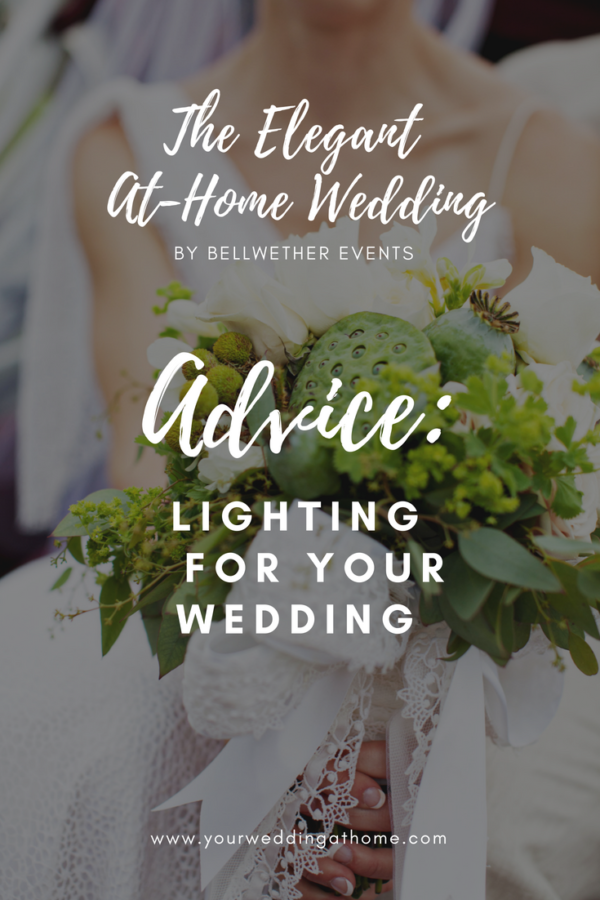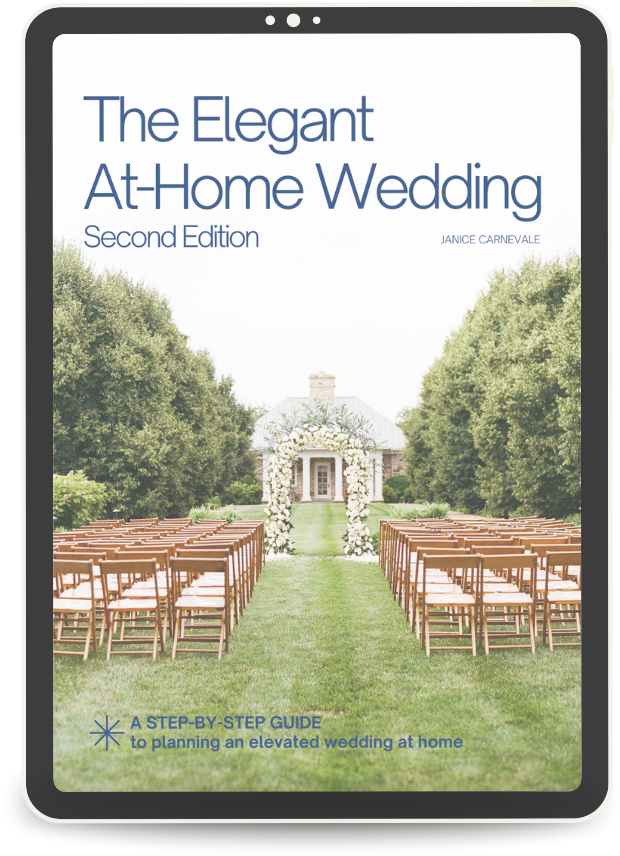DOWNLOAD NOW:

Lighting is one of the most crucial yet often overlooked pieces of any wedding puzzle. It is the easiest way to make your at home event look elegant and complete, and conversely, foregoing professional lighting is one of the easiest ways to undo all the other wonderful touches you put into your wedding.
Generally your ceremony and cocktail reception will occur during daylight hours and therefore those spaces will not require additional lighting. But you should confirm this; if the sun is going to be setting during either of these events, you may want to consider adding lighting. Sunset wedding ceremonies are beautiful but with poor planning they can literally end in total darkness.
Inside the reception tent, you may want to consider getting a few different types of lighting. Here are some of the most common types of lighting currently used at weddings so that you can have a working understanding of lighting when you begin to plan it with your lighting vendor.
Uplights are fixtures that usually sit on the ground and point a medium-sized beam of light up onto the sidewall of the tent. Hoping not to have tent sidewalls? They can also be affixed to the top of a side pole to put light onto the ceiling of the tent. These can be color-coordinated to match the theme of your event, and if you select LED uplights, the colors can be changed throughout the course of the event to add mood and excitemezAq2nt.
Pinspot lights are often affixed to the tent center poles and offer a very narrow beam of light from above highlighting table centerpieces, which will then look fabulous in your wedding photographs. At a minimum you will want one pinspot per table, but two would be ideal so that the decor item you are highlighting is lit from both sides. You should remember to pinspot other notable items like the cake, guestbook table and any hanging decor you might have in the tent.
It is nice to do a “wash” or a wide, soft beam of light onto the dance floor and the dinner buffets. This will help the photographer document the dancing and allow your guests to better see what is being served for dinner.
Decorative hanging lights such as lanterns, chandeliers and drum lights are also an option. After considering the look and feel of your event, consult your lighting provider about these more decorative lighting options.
String lights are a very popular trend in wedding lighting right now. You can install string lights inside your tent, and it might also be possible to set some up outside the tent framework. Consult your lighting professional to find out what options are available.
All of these lights should be on dimmers. When your guests arrive for dinner, you will want the lights to be a bit brighter, so that they can find their tables and seats easily. I usually leave the lights up throughout dinner, as guests like to be able to see what they are eating, and then I will dim everything once dancing has really kicked off.
At an at-home wedding, it is even more important to consider landscape lighting outside of the tent. You need to make sure that every area your guests (and staff) will visit is properly lit. This includes pathways and entrances to the tents, restrooms, catering prep area and valet station or parking area. Your lighting professional can provide the correct type of landscape lighting to make sure that these areas are well lit throughout the wedding celebration. You may also want to use landscape lighting to accent the front of the home or a tree or two, to add to the ambiance of the at-home setting.
For more information on lighting for your backyard wedding, please see page 30 in The Elegant At-Home Wedding!
Photos courtesy of Katie Stoops Photography. Tent and lighting by Skyline Tents.
For more information on lighting for your backyard wedding, please see page 30 in The Elegant At-Home Wedding!



